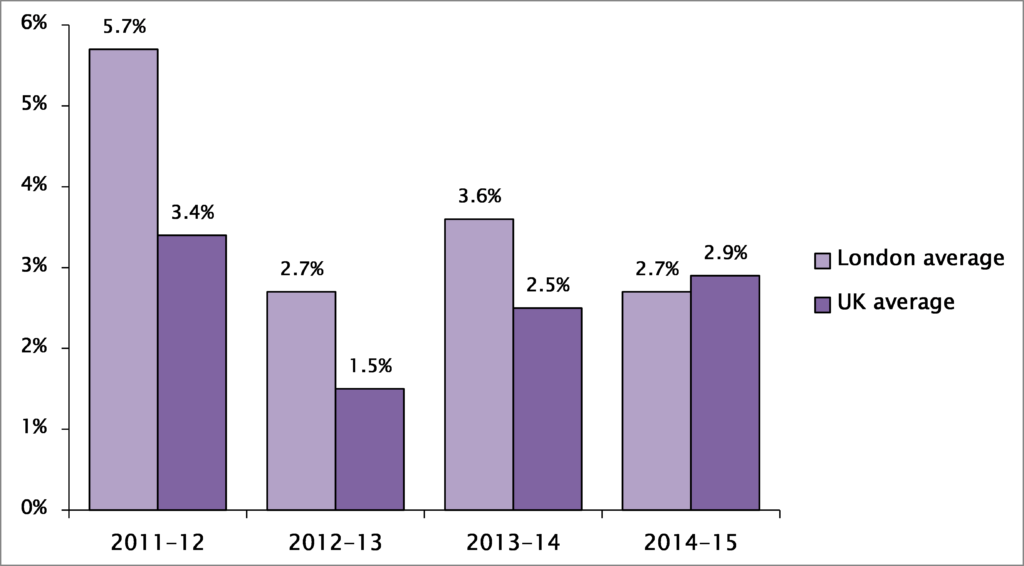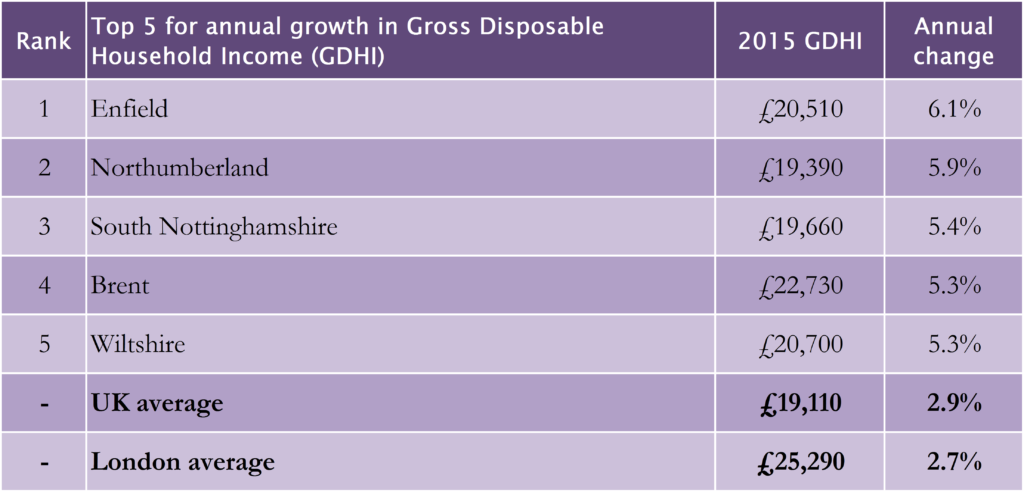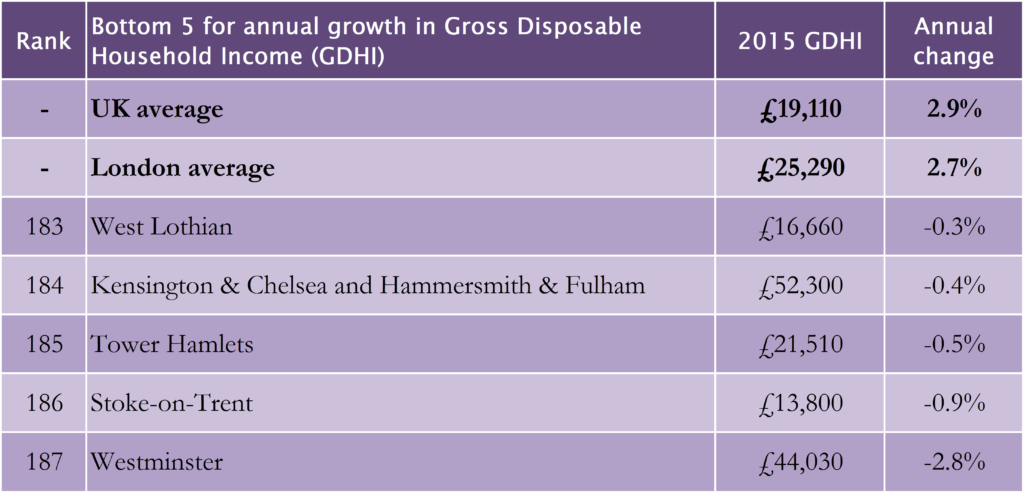Publications that covered this story include the Daily Telegraph on 4 October.
- Rising housing and travel costs are key drivers behind fall
Growth in Londoners’ disposable income has fallen behind the national average for the first time in five years as regulatory measures hit the financial services sector and rising costs on the capital’s residents have an impact, our research reveals.
UK average growth in Gross Disposable Household Income (GDHI) was 2.9% last year* to an average £19,110, compared to just 2.7% growth to £25,290 for London. London normally outperforms the rest of the UK in net wealth creation, however Northumberland, for example, saw a 5.9% increase in disposable income to an average £19,390.
Gross Disposable Household Income is the amount of money a household has left to spend or save after taxes and mortgages or rent are taken into account.
Londoners have long complained of subsidising the rest of the country. The Capital is home to nine of the top ten areas in the UK for highest average Income Tax payments per person.
Regulatory initiatives in the financial services sector have further undermined income growth in London. Given the size of the capital’s financial services sector, regulatory initiatives such as the cap on bankers’ bonuses, Basel II and III and Dodd Frank, have all had an impact. According to a 2017 report from TheCityUK, approximately 150,000 are employed just by banks in London.
Rising housing and travel costs, outpacing growth in most other parts of the country, are also likely to be having a significant impact on Londoners’ disposable income.
Colin Jones, partner in our London office, comments: “The Government continues to rely on the City for significant tax receipts and it is now impacting Londoners’ income growth.”
“Increasingly shifting more of the tax burden away from lower-earners has largely passed many Londoners by and the benefits have been felt by citizens elsewhere in the UK more considerably.”
“With Brexit on the horizon, if a suitable deal is not put in place to safeguard jobs in the City, it could have a further impact on Londoners’ income levels.”
“On top of these caps, high travel costs, rising house prices and growing rental costs are increasingly eating into a greater chunk of Londoners’ earnings generally.”
“Since the recession the rest of the UK has been playing catch-up with Londoner’s growing their disposable income, but now the capital has fallen behind.”
Additionally Westminster, Tower Hamlets and Kensington & Chelsea and Hammersmith and Fulham all feature at the bottom of the table, showing year-on-year contractions in disposable income last year (see charts below).
Annual growth in disposable income for London falls behind national average

Top 5 areas in the UK for annual growth in disposable income

Bottom 5 areas in the UK for annual growth in disposable income

*Year to end December 2015, latest figures available

